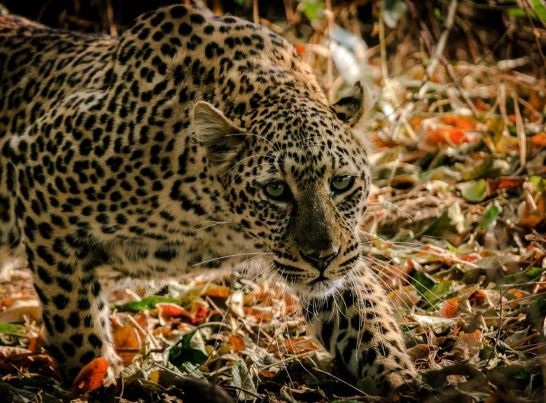Leopards, with their elusive nature and striking spotted coats, are among the most challenging animals to hunt in Africa. Known for their stealth and adaptability, these predators require a blend of patience, skill, and knowledge to track successfully. If you are considering hunting leopard in Africa, understanding the techniques and best practices can significantly enhance your experience while ensuring ethical standards are maintained.
[DYNAMIC-BLOGTABLEOFCONTENT]
Understanding the Leopard’s Behaviour
Leopards are solitary animals, primarily active during dawn and dusk. Their habits and natural behaviours make them particularly difficult to locate. Understanding these traits is crucial for a successful hunt.
Key Characteristics
- Territorial Nature: Leopards establish territories marked by claw scratches and urine.
- Diet: They primarily hunt smaller mammals such as antelope, warthogs, and monkeys.
- Habitat: Found in various environments, including savannas, forests, and mountainous regions.
Being familiar with these behaviours helps hunters predict movement patterns and identify potential locations for tracking.
Preparation for Leopard Hunting
Proper preparation is essential when hunting leopard. From permits to equipment, each detail contributes to the success and legality of the hunt.
1. Legal Requirements
Hunting leopard in Africa is heavily regulated. Ensure you:
- Obtain necessary hunting permits.
- Work with licensed outfitters or guides.
- Adhere to local laws and quotas set for leopard populations.
2. Choosing the Right Equipment
The right gear is critical for safety and efficiency:
- Firearms: A rifle with a calibre of at least .375 is recommended.
- Ammunition: Opt for premium-grade rounds designed for big game.
- Optics: High-quality scopes and binoculars aid in spotting and aiming.
- Clothing: Wear neutral, durable attire suited for the African environment.
3. Physical and Mental Preparation
Leopard hunting demands endurance. Physical fitness, combined with mental focus, ensures you are prepared for long hours of tracking and waiting.

Techniques for Hunting Leopard
Leopards’ elusive behaviour calls for specific techniques to locate and approach them effectively. Below are the most common methods used by experienced hunters:
1. Baiting
Baiting involves using fresh meat to attract leopards to a specific area. This technique requires careful planning and execution.
- Placement: Bait is often hung in trees to mimic natural prey scenarios.
- Timing: Leopards are most likely to approach bait at night.
- Monitoring: Use trail cameras to confirm the presence of a leopard.
2. Spot-and-Stalk
For hunters seeking a more traditional challenge, the spot-and-stalk method involves tracking leopards in their natural habitat.
- Tracking: Follow signs such as tracks, claw marks, or fresh kills.
- Approach: Move quietly and remain downwind to avoid detection.
- Observation: Leopards often rest in trees or dense cover during the day.
3. Calling
Using predator calls can mimic the sounds of prey or other leopards, enticing them to reveal themselves.
- Types of Calls: Distress calls from small mammals or imitations of rival leopards.
- Usage: Call intermittently to avoid spooking the animal.
Ethical Considerations in Leopard Hunting
Ethics are central to all forms of hunting. Responsible hunters follow these guidelines to ensure their actions support conservation efforts and respect wildlife.
1. Adhere to Regulations
- Hunt only within designated areas.
- Target mature males that no longer contribute to breeding.
2. Ensure Quick, Humane Kills
Precision in shot placement is vital. Aim for vital organs to minimise suffering and ensure a humane kill.
3. Contribute to Conservation
Revenue from hunting permits supports anti-poaching initiatives, habitat preservation, and local community development.

Safety Tips for Leopard Hunts
Leopards are powerful predators capable of swift, dangerous reactions. Follow these safety measures:
- Always hunt with a licensed guide or professional tracker.
- Stay alert to your surroundings, particularly in dense bush.
- Keep firearms loaded only when ready to shoot.
- Avoid pursuing a wounded leopard alone; this increases the risk of an attack.
The Importance of Conservation
Leopard hunting in Africa plays a role in conservation when conducted responsibly. Funds generated from hunting permits contribute to preserving habitats and managing wildlife populations. In areas where hunting is carefully regulated, leopard numbers are more stable compared to regions without management plans.
Success Stories
- Namibia: Community-led initiatives have successfully balanced leopard hunting with conservation, benefiting both wildlife and local populations.
- Botswana: Strict quotas and regulations ensure sustainable hunting practices while minimising human-wildlife conflict.
Choosing the Right Outfitter
Selecting a reputable outfitter is key to a successful and ethical hunt. Look for the following:
- Licensed and experienced professionals.
- Positive reviews and recommendations from other hunters.
- Clear adherence to local and international hunting regulations.
Final Thoughts
Hunting leopard in Africa is a challenging and rewarding experience that requires careful planning, ethical practices, and respect for the environment. By following best practices and contributing to conservation efforts, hunters can enjoy a memorable adventure while supporting the sustainable management of wildlife. Whether it’s your first safari or you’re an experienced hunter, understanding these techniques and principles ensures a successful and responsible hunt.
